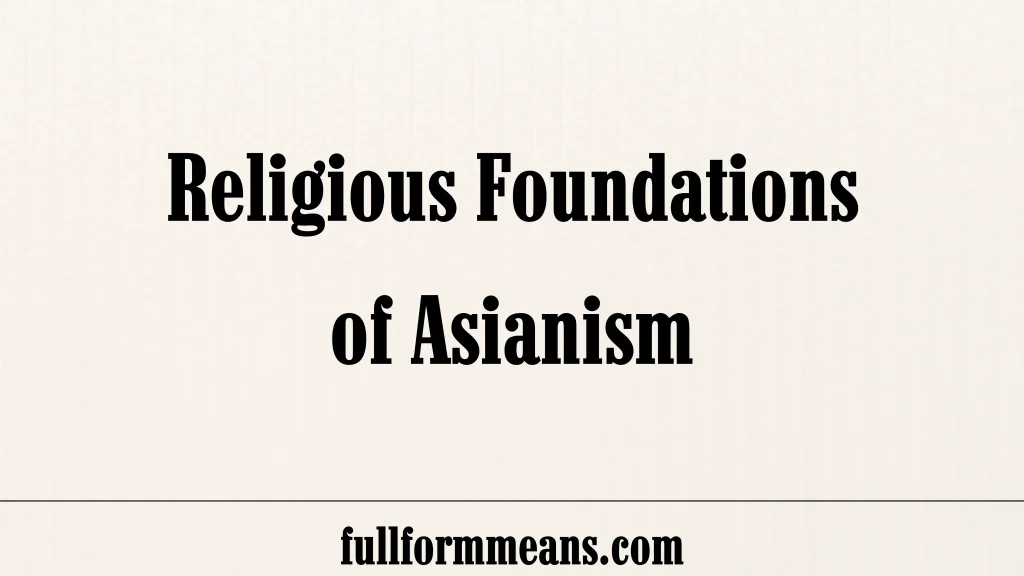Asianismo stands as a cultural movement born in the late 20th century, aiming to celebrate the rich tapestry of Asian cultures. This movement, a response to Western influence, honors Asia’s diverse traditions, philosophies, and artistic expressions. It showcases the unique identity of Asia, bringing to light the region’s distinctive character. Asianismo seeks to unite people of Asian descent, fostering respect for cultural diversity and a strong sense of Asian identity.
What is Asianismo
Asianismo is about unity and respect. It emphasizes the importance of coming together, celebrating our differences, and building a positive identity for Asians worldwide. This movement is not just about recognizing the beauty of Asian cultures but also about activism. It champions the rights and interests of Asians, aiming to make a significant impact in various fields such as art, literature, and politics.
Cultural Significance of Asianismo
The cultural significance of Asianismo cannot be overstated. It has reshaped how we view art, literature, philosophy, and more. By promoting the inclusion of Asian studies in educational curricula and increasing the visibility of Asians in media, Asianismo has paved the way for stronger cultural and political ties between Asia and Latin America. It stands as a testament to the power of cultural unity and the positive impact it can have on society.
The Historical Journey of Asianism
The roots of Asianismo dig deep into the early 20th century, a time when Asian nations sought to reclaim their identity from colonial influences. Figures like Sun Yat-sen and Rabindranath Tagore spearheaded this movement, advocating for an Asia-centric worldview. Asianismo not only celebrates cultural diversity within Asia but also promotes mutual respect and understanding, contributing significantly to regional dynamics and organizations such as ASEAN.

Religious Foundations of Asianism
Religious philosophies such as Buddhism and Taoism have significantly influenced Asianismo. These spiritual frameworks emphasize harmony, balance, and respect for all life forms, reflecting the movement’s core principles. By integrating these religious beliefs with cultural practices, Asianismo fosters a deeper connection among Asian communities, encouraging a holistic approach to unity and diversity.
Diversity for a Unified Future
Asianismo presents a vision for Asia that is interconnected and harmonious. It encourages embracing diversity and working together towards common goals, providing a framework for addressing shared challenges. By fostering a sense of shared destiny among Asian nations, Asianismo aims for a future where cooperation and understanding pave the way for progress and unity.
The Impact and Challenges Ahead
While Asianismo has made significant strides in promoting Asian cultures and identities, it also faces criticisms. Concerns over oversimplification, exclusion, and appropriation highlight the complex dynamics within this movement. Despite these challenges, Asianismo remains a beacon of hope for a united and diverse Asia, committed to leveraging collective strengths for a brighter future.
The Influence of Asianismo
The influence of Asianismo extends far and wide, impacting various aspects of society, from art and literature to politics and education. This movement promotes a deeper understanding and appreciation of Asian cultures, challenging the Western-dominated narrative and encouraging a more inclusive worldview. By highlighting the richness of Asian traditions and philosophies, Asianismo has played a crucial role in fostering intercultural dialogue and strengthening connections between Asia and other regions, notably Latin America. Its impact is seen in the increased visibility of Asian perspectives in global discussions, the inclusion of Asian studies in academic curricula, and the rise of cultural exchanges that celebrate Asian heritage.
Who Follows Asianismo?
Asianismo appeals to a broad audience, transcending geographical and cultural boundaries. Its followers include:
- People of Asian Descent: Individuals seeking to connect with their heritage and promote a positive sense of Asian identity.
- Cultural Enthusiasts: Those fascinated by the diversity of Asian cultures and interested in learning about and preserving traditional practices.
- Academics and Scholars: Researchers and educators who study and teach Asian philosophies, art, and literature, contributing to the academic discourse on Asia.
- Activists: Individuals committed to advocating for the rights and interests of Asians, both within Asia and globally.
- Artists and Writers: Creatives inspired by Asian aesthetics, narratives, and philosophies, incorporating these elements into their work.
Conclusion
Asianismo embodies the spirit of unity, diversity, and cultural pride. It stands as a cultural movement that not only celebrates the rich heritage of Asia but also advocates for the rights and interests of its people. Through its emphasis on respect, diversity, and activism, Asianismo continues to inspire and influence, shaping a future where Asian cultures are celebrated, understood, and integrated into the global tapestry. As we move forward, the principles of Asianismo offer a guiding light towards a more inclusive, respectful, and united world.
Also Read: Käätjä Finnish Culture and Folklore
